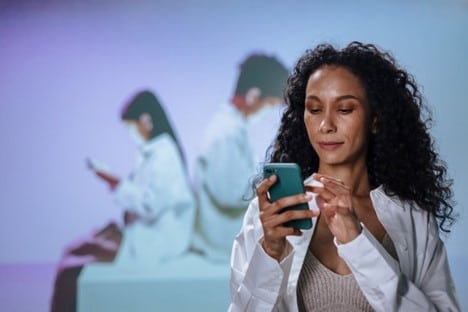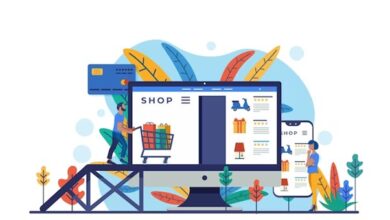Personalization Tech: What Is It and How to Benefit from It

Personalization Tech: In the age of the internet, there’s been a huge change in how companies and brands engage and talk to their customers. Think of it like when you walk into your favorite coffee shop and the barista remembers your order. It feels nice, right? You feel recognized and special.
In the digital world, businesses are trying to create that same feeling. And that’s where personalization technology comes into play.
Let’s understand this further below and how businesses and brands can benefit from it:
What is personalization technology?
Let’s try to understand what personalization technology entails. Imagine a friendly shopkeeper in your local town. Over time, they get to know you. They remember if you like chocolate chip or oatmeal cookies or if you prefer red shirts over blue ones. In the online world, personalization tech is like that shopkeeper. But instead of a human memory, it uses computers and simple software tools to remember your likes and dislikes. It looks at posts you click on, stuff you buy, and even stuff you almost buy. By doing this, it tries to understand you better, so it can show you things you might like the next time you visit.
The Rise of Personalization in Various Industries
Stock Photography: Adding a Personal Touch to Brand Messaging
In our visually-driven world, pictures speak louder than words. Brands are always looking for ways to connect with their audience on a deeper level, and here’s where stock photography plays a significant role.
Let’s imagine you’re browsing a travel website. If you’ve previously searched for beach vacations, the site might display a banner with a serene beach image the next time you visit. But where does that image come from? Most often, it’s from a stock photography agency. Brands collaborate with these agencies to get a vast array of photos.
Stock photography allows brands to select images that resonate with different sections of their audience. For instance, a sports brand might use pictures of various activities—from yoga to basketball—based on what they know about a user’s preferences. If they recognize a user is into yoga, they might showcase yoga-related images and products to that user.
By integrating stock photos that align with users’ interests, brands create a more personalized visual experience. It’s like walking into a room and seeing your favorite painting on the wall. The picture might be the same for everyone, but the feeling it evokes is personal. Through stock photography, brands can ensure their messages are not only heard but also felt, making every user feel like the brand speaks just to them.
E-commerce Sites: Getting Personal
Shopping online has become a daily habit for many of us. And the best part? When the online store seems to know just what you want, This isn’t magic. It’s personalization. Online shopping sites study what you look at, what you buy, and what you almost buy. Then, the next time you visit, they show you products they think you’ll love. It’s like those moments when you’re thinking of a song, and suddenly, it starts playing on the radio. These websites want to make shopping easy and fun for you, so you’ll come back again and again.
Streaming Platforms Tuned to Your Taste
Many of us unwind by watching a show or listening to music on platforms like Netflix or Spotify. But have you noticed how these platforms seem to know just the type of music or show you like? After a long day, it’s nice to see a list of songs or shows picked just for you. These platforms use personalization to study what you watch or listen to. Then, they suggest new content based on your tastes. It’s like having a personal DJ or movie buddy who knows your mood and plays just the right song or movie.
Benefits of Using Personalization Technology
Enhanced User Experience
Think of your online experiences as visits to a theme park. There are so many rides and attractions, and you don’t want to waste time on those you won’t enjoy. Personalization is like having a guide who remembers which rides you loved before and suggests new ones you might enjoy. When websites or apps use personalization, they make customer’s time online more enjoyable. They bring forward the stuff customers like and hide the stuff they don’t, and this makes them feel special and understood.
Increased Conversion Rates
Imagine you’re running a lemonade stand. If you remember that a regular customer likes extra sugar in their lemonade, you’d make it sweet for them every time, right? In the same way, online stores use personalization to show customers items they think they’d like to buy. And because these suggestions are based on what customers like, there’s a higher chance they might actually buy them. This means more sales for online businesses. It’s a win-win!
Improved Loyalty and Retention
Have you ever stuck with a brand or a store simply because they “get you”? That’s loyalty.
In the online world, when a website or app shows they understand what customers like or need, they’re more likely to keep coming back. Customers feel valued, almost like they’re friends with the brand. When businesses can create that feeling using personalization, people stay loyal and keep returning. It’s like having a favorite diner that knows exactly how you like your pancakes.
The Value of Design Thinking In Business
How To Open A Profitable Business In The Metaverse Era
12 New Whatsapp Business Features You Cannot Ignore in 2022
Conclusion
In our fast-paced digital world, it’s easy to feel like another face in the crowd. But with personalization tech, the online spaces feel more like a friendly neighborhood. Whether it’s an online store showing just the right product, a music platform playing your favorite tune, or a stock photo agency suggesting the perfect image, personalization makes our digital journey feel special and unique. Just like that barista who remembers your coffee order, personalization tech adds a touch of personal care to customers’ online experiences. It’s a reminder that in this vast digital universe, there’s a spot specifically for everyone. As technology continues to grow, one aspect remains clear: the personal touch, even if it’s digital, always makes a difference.







